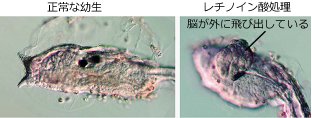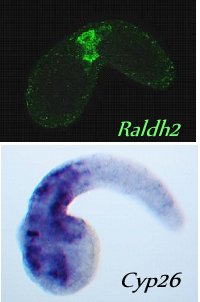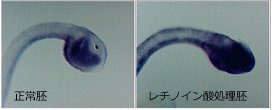| * | Kanda, M., Wada, H. & Fujiwara, S. (2009) Epidermal expression of Hox1 is directly activated by retinoic acid in the Ciona intestinalis embryo. Dev. Biol. 335: 454-463. |
| * | Fujiwara, S. (2006) Retinoids and non-vertebrate chordate development. J. Neurobiol. 66: 645-652. |
| * | Ishibashi, T., Usami, T., Fujie, M., Azumi, K., Satoh, N. & Fujiwara, S. (2005) Oligonucleotide-based microarray analysis of
retinoic acid target genes in the protochordate, Ciona intestinalis. Dev. Dyn.
233: 1571-1578. |
| * | Fujiwara, S.
& Kawamura, K.
(2003) Acquisition of retinoic acid signaling pathway and innovation of the chordate body plan. Zool.
Sci. 20: 809-818. |
| * | Ishibashi, T.,
Nakazawa, M., Ono, H., Satoh, N., Gojobori, T. & Fujiwara, S.
(2003) Microarray analysis of embryonic retinoic acid
target genes in the ascidian Ciona intestinalis. Dev. Growth Differ. 45:
249-259. |
| * | Nagatomo, K.,
Ishibashi, T., Satou, Y., Satoh, N. & Fujiwara,
S. (2003) Retinoic acid affects gene expression and morphogenesis
without upregulating the retinoic acid receptor in the ascidian Ciona
intestinalis. Mech. Dev. 120: 363-372. |
| * | Nagatomo, K. & Fujiwara, S.
(2003) Expression
of Raldh2, Cyp26 and Hox-1 in normal and retinoic acid-treated Ciona
intestinalis embryos. Gene Exp. Patt. 3: 273-277. |



![RAR Éæé Hox1 â`qÌ]Ê«»](Hox1.jpg)

